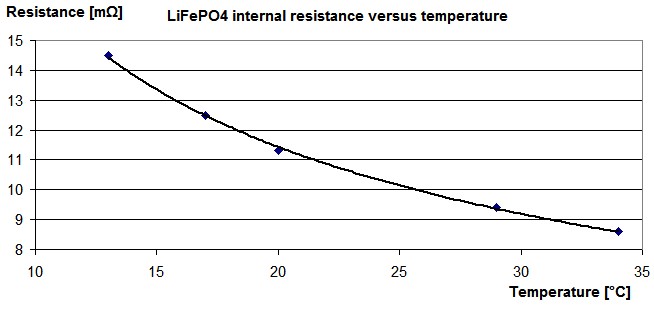avandalen
100 W
Here is the old topic which is locked:
http://endless-sphere.com/forums/viewtopic.php?f=14&t=32211
I measured the A123 ANR26650 LiFePO4 internal resistance again. When I take the temperature and the solder tabs into account, the internal resistance is 10mΩ which is equal to the value in the ANR26650 datasheet.
The LiFePO4 battery internal resistance is temperature dependent.

Website:
http://www.avdweb.nl/solar-bike/batteries.html
http://endless-sphere.com/forums/viewtopic.php?f=14&t=32211
I measured the A123 ANR26650 LiFePO4 internal resistance again. When I take the temperature and the solder tabs into account, the internal resistance is 10mΩ which is equal to the value in the ANR26650 datasheet.
The LiFePO4 battery internal resistance is temperature dependent.

Website:
http://www.avdweb.nl/solar-bike/batteries.html





